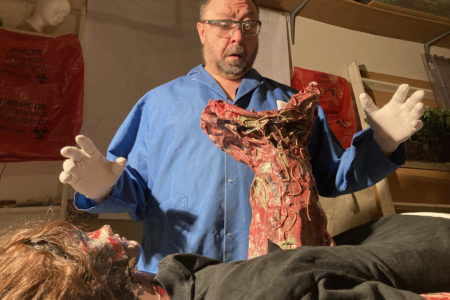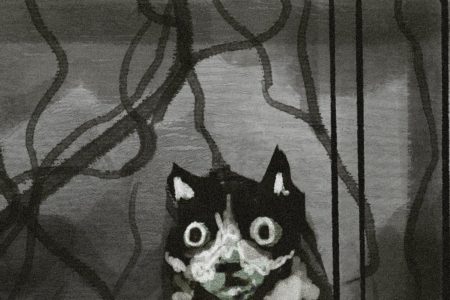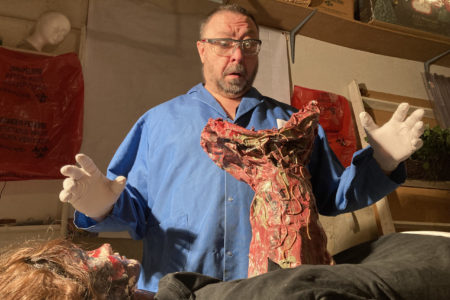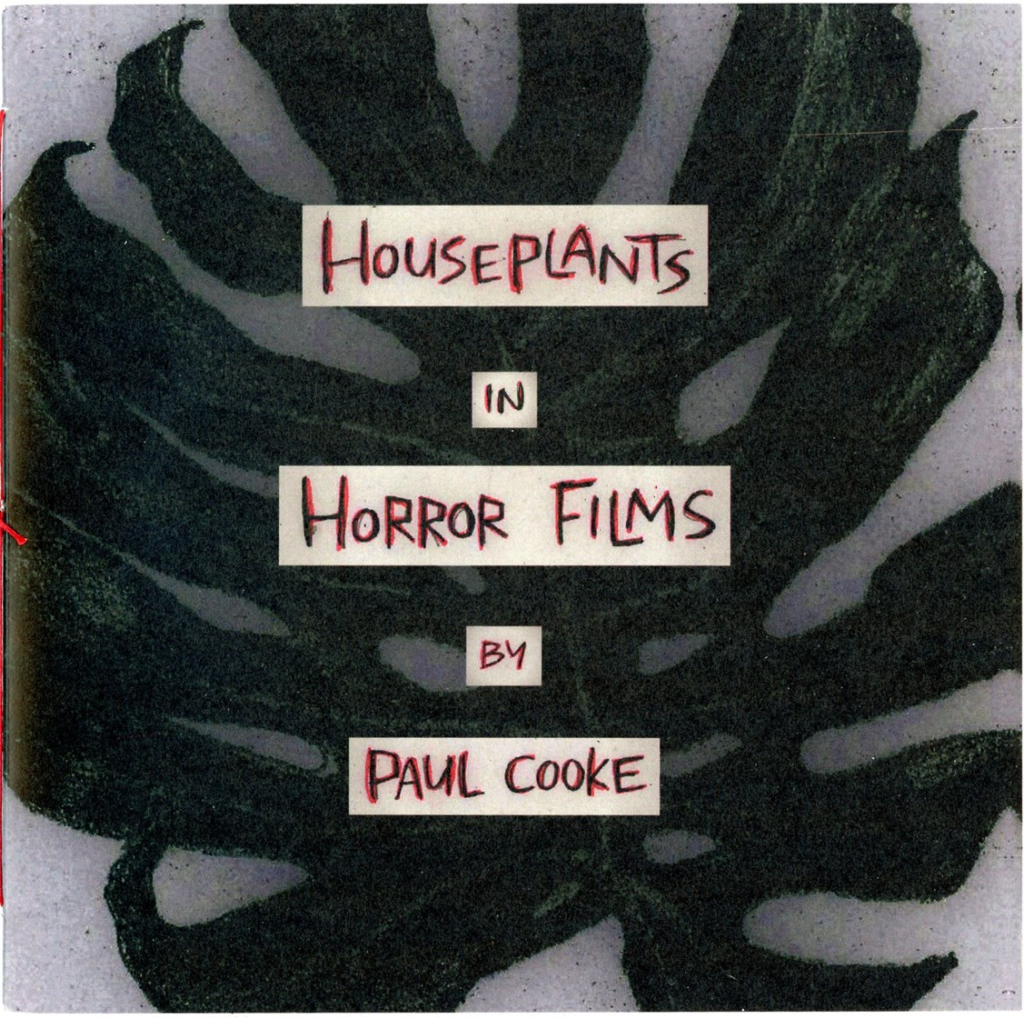
Houseplants in Horror Films
Fanzine, Paul Cooke, 20 pgs, etsy.com/shop/DubiousBooks, $13.53
It seems that cinematic houseplants — innocent set props, alive but insentient, quiet, immobile — have no significance. Upon closer inspection, directors tend to be obsessive control freaks who hunger to inject meaning into every inch of film. They certainly have the means to do so, with bloated budgets of millions that could covet even the rarest of potted plants. Paul Cooke’s Houseplants in Horror Films zine makes you wonder whether flora films had meatier roles than some of the fauna.
Some readers of this zine might delight in the focus on this meaningless detail. Others may enjoy discovering a significance in connecting the two. Cooke provides no hints to his aim, save perhaps within his smoky drawings of each plant, bathed mostly in muted greens.
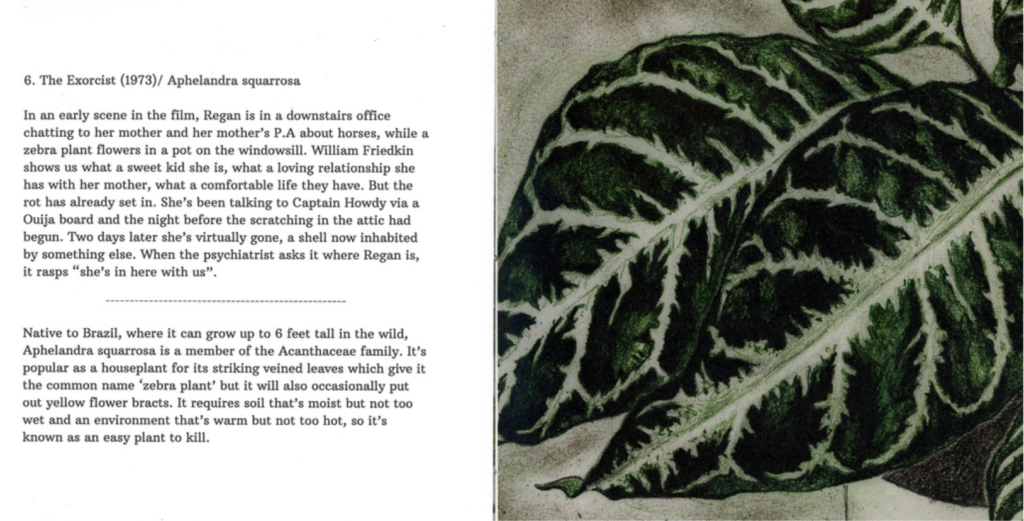
At the top of each spread, Cooke gives roughly six sentences of plot summary including the scene in which the houseplant makes an appearance. The bottom of the page is reserved for the plant’s genus and species, nickname and origin, and a few bits of trivia. He may tell the reader of the plant’s lethality if ingested, the relative ease by which one might kill it, or whether it is considered invasive. Is it a mere coincidence that each specific plant ended up in that particular horror flick?
The summaries are a little scary — just a flash of where the terror lies in each film. But it becomes clear that you, the reader, are projecting your own fears to the implications. You ask yourself: Did the houseplant witness the horror? Do its descriptive factors foretell the torture in the final act? Or am I creating sinister connections that aren’t even there, a campfire story in my own mind?
Houseplants in Horror Films is a unique, quality creation that challenges its reader. You’ll be thinking about it long after your first read.


